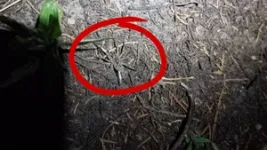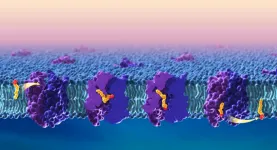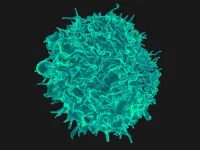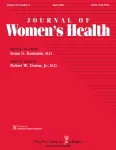(Press-News.org) A limited menu of prey may weave a tangled food web by emboldening wolf spiders of multiple species to dine on each other and even cannibalize their own, says a study from the University of Nebraska–Lincoln.
Ecologists have long known that predators with otherwise-similar diets can coexist by effectively divvying up the food sources of a community to ease competition and, ideally, leave enough prey for everyone. But analyses of wolf spider species in Nebraska suggest that when the diversity of their mutual prey is lacking, the eight-legged predators might instead maintain an ecological equilibrium, in part, by eating one another.
A decline in the variety of prey should spell bad news for weaker predators, which are then put into more direct competition with their stronger counterparts, said Stella Uiterwaal, who led the study while earning her doctorate at Nebraska. Predators that do manage to at least occasionally kill and eat their more competitive peers, though, could benefit in a couple of ways that collectively act as an “equalizing mechanism,” she said.
“Some of your diet is now coming from that other predator, instead of the shared prey that you’re competing for,” said Uiterwaal, now a postdoctoral researcher at Washington University in St. Louis. “And you’re also reducing the population size of that better predator, so you have fewer of them to compete with.”
The study originated from what Uiterwaal observed while studying and later teaching at Cedar Point Biological Station, a lake-adjacent field site in southwest Nebraska. It was there that she and some colleagues, including doctoral adviser John DeLong, realized that the wealth of local wolf spider species seemed to be defying an ecological principle by occupying more or less the same niche of the same habitat.
“We noticed that there are so many different wolf spider species that all seem to be doing the same thing,” Uiterwaal said. “And there’s this classic ecological idea that species can’t be doing the exact same thing. If that happens, they won’t be able to persist in the environment for very long.”
So the researchers spent two summers collecting specimens of eight wolf spider species and their potential prey. Wanting to get as accurate a count of that prey as possible, Uiterwaal took to plopping hollow wooden boxes onto unsuspecting plots of earth, then using a customized vacuum to suck up every ground-bound and flying insect within. Many of the captured critters also appeared on the wolf spider menu: flies, grasshoppers, crickets, butterflies, moths, aphids and, yes, other spiders.
“You name it, and they’ll eat it,” Uiterwaal said. “We’ve even seen spiders out there eating toads.”
Still, cataloging the actual diets of 605 wolf spiders would require more sophisticated techniques. One of those techniques involved analyzing the DNA of the spiders’ digested food in search of barcodes: DNA sequences unique to each type of prey the spiders consumed. Uiterwaal also applied a mathematical method — one she developed — that helped the team ascertain how much of each prey a spider had consumed.
Counter to the team’s expectations, the diet of any one wolf spider species mostly resembled the others.
“All these spiders are essentially eating the same things — which I wasn’t expecting, because you do find these spiders in slightly different places, and they look different, and they have different behaviors,” Uiterwaal said. “You would expect that to reflect in their diet somehow. But it turns out that they overlap a lot.”
Their discovery did leave open the possibility of a spider-eat-spider world. Just one problem: Given the challenges of distinguishing among the DNA of wolf spider species, Uiterwaal knew the barcoding would struggle to capture any spider-on-spider predation. To account for it, she and the team also analyzed the ratio of lighter vs. heavier nitrogen atoms, or isotopes, in the tissue samples of every wolf spider they collected. Because heavier nitrogen atoms persist and accumulate through the food web, predators tend to contain more of those isotopes than do their prey — meaning that researchers can use them to estimate an animal’s ranking in a local food web.
It also meant that, if wolf spiders were regularly eating each other, the isotope analysis would likely rank them higher on the food web than the barcode-based method did. That’s exactly what Uiterwaal and her colleagues found. In fact, the average ranking far surpassed what the team anticipated. In many food webs, plants rank as a 1, plant-eating animals as a 2, and the predators of those herbivores as a 3, with the predators of predators coming in at a 4. Often, DeLong said, that’s about as high as a terrestrial food web seems to stretch.
The average ranking of a wolf spider species at Cedar Point Biological Station? Nearly a 6. One particular spider rated an 8.5 — an especially lofty perch for a predator that, as Uiterwaal put it, “is not exactly what anyone would call the top of the food chain.”
“It implies this level of complexity and predation that is probably really important in determining how the whole system works,” said DeLong, associate professor of biological sciences at Nebraska. “Instead of thinking about these short food chains where everything is very vertical, it’s really this recursive thing where everybody’s eating everybody, kind of compounding on itself.
“The implication for how the food web is structured is really, really different than what we would have imagined going into this.”
The team was in for yet another surprise. Uiterwaal decided to analyze how much certain factors — the sex and size of a predator, the characteristics of its environment, the abundance and diversity of its prey — might influence the likelihood of one wolf spider preying on another. Prior lab-based experiments had suggested that all of those variables might be playing some role. But the team found that only the variety of prey, or the lack thereof, was associated with the wolf spiders attacking their own.
Though any number of reasons could help explain the divergence, Uiterwaal said the disparities between the lab and the wild are probably a good place to start.
“My guess is that foraging in the field is just so different compared to foraging in a Petri dish in a lab, where you don’t have all these other things to worry about,” she said. “You’re worried about getting eaten by other spiders or other predators (in the wild). Maybe you have parasites that you’re dealing with. You’re also trying to find mates, find areas that are the right temperature for you. You have all these other things that are going on and that may be drowning out these effects that we see in the lab, when we’re just playing with one specific variable.
“The fact that these expectations we have from the laboratory are not (necessarily) going to translate well into complex, real-life situations — that’s not just about spiders. That’s going to be true for any system.”
DeLong credited his former advisee, whom he called a “true champion,” for carrying out such an ambitious study and managing to reveal nuances that lab work might miss.
“It did pull together just really different kinds of data,” he said, “to paint a different kind of story than anybody had told before.”
The team detailed its findings in the Journal of Animal Ecology. Uiterwaal and DeLong authored the study with Nebraska’s Amber Squires and Bennett Grappone, Cornell University’s Brian Dillard, and the University of California, Merced’s Sora Kim and Ariadne Castaneda. The researchers received support from the National Science Foundation.
END
Uniformity of prey can yield spider-eat-spider world
Study suggests wolf spiders may turn to cannibalism, preying on related species
2023-05-08
ELSE PRESS RELEASES FROM THIS DATE:
Researchers develop model for how the brain acquires essential omega-3 fatty acids
2023-05-08
Researchers at the UCLA David Geffen School of Medicine, the Howard Hughes Medical Institute at UCLA and the National Institutes of Health have developed a zebrafish model that provides new insight into how the brain acquires essential omega-3 fatty acids, including docosahexaenoic acid (DHA) and linolenic acid (ALA). Their findings, published in Nature Communications, have the potential to improve understanding of lipid transport across the blood-brain barrier and of disruptions in this process that can lead to birth defects or neurological conditions. The model may also enable researchers to design drug molecules that are capable of directly ...
T cells can activate themselves to fight tumors
2023-05-08
When you need a bit of motivation, it often has to come from within. New research suggests cancer-fighting immune cells have found a way to do just that.
Scientists at University of California San Diego have discovered a property of T cells that could inspire new anti-tumor therapeutics. Through a previously undescribed form of cell auto-signaling, T cells were shown to activate themselves in peripheral tissues, fueling their ability to attack tumors.
The study, published May 8, 2023 in Immunity, was led by study first author and postdoctoral fellow Yunlong Zhao, PhD, and co-senior authors Enfu Hui, PhD, professor in the School of Biological Sciences at UC ...
First observational evidence of beaufort gyre stabilization, which could be precursor to huge freshwater release
2023-05-08
Woods Hole, Mass. (Monday, May 8, 2023) - A new study provides the first observational evidence of the stabilization of the anti-cyclonic Beaufort Gyre, which is the dominant circulation of the Canada Basin and the largest freshwater reservoir in the Arctic Ocean.
The study uses a newly extended record of “dynamic ocean topography” satellite data from 2011-2019 provided by two of the co-authors, along with an extensive hydrographic dataset from 2003-2019, to quantify the changing sea surface height ...
Beyond necessity, hearing aids bring enjoyment through music #ASA184
2023-05-08
CHICAGO, May 8, 2023 – For decades, hearing aids have been focused on improving communication by separating speech from background noise. While the technology has made strides in terms of speech, it is still subpar when it comes to music.
In their talk, “Evaluating the efficacy of music programs in hearing aids,” Emily Sandgren and Joshua Alexander of Purdue University will describe experiments to determine the best hearing aids for listening to music. The presentation will take place Monday, May 8, at 11:45 a.m. Eastern U.S. in the Indiana/Iowa room, as part of the 184th Meeting ...
Women are underrepresented in cardiovascular clinical trials
2023-05-08
A new study has shown that women are underrepresented in late-breaking cardiovascular clinical trials (LBCT) presented at national meetings. The study is published in the peer-reviewed Journal of Women’s Health. Click here to read the article now.
LBCT can have an impact on novel drug and device approvals, intervention indications, and patient management, according to Martha Gulati, MD, MS, from Smidt Heart Institute, and coauthors of the current study. The study investigators assessed the inclusion of women participants in LBCT presented at recent American ...
Veterans Affairs healthcare is as good as non-VA care for many operations
2023-05-08
Key takeaways
Quality and safety: The quality and safety of care across surgical specialties at VA healthcare sites is as good as, or better than, non-VA health centers on several quality measures.
Cost and efficiency: When looking at several studies that assessed differences in cost and efficiency, non-VA medical centers performed better than VA centers.
CHICAGO: By most measures, surgical care provided to United States military veterans in Veterans Affairs (VA) centers across the country is as good as, or better than, the same care delivered at non-VA medical centers, according to a new ...
National trends in pediatric deaths from fentanyl
2023-05-08
About The Study: Mirroring trends seen among adults, pediatric deaths from fentanyl began to increase substantially in 2013, resulting in a more than 30-fold increase in mortality between 2013 and 2021. A surge that began in 2018 has led to a nearly 3-fold increase in deaths among older adolescents and a nearly 6-fold increase among children younger than 5 years. Across age groups, annual deaths peaked in 2020 and 2021, suggesting that the COVID-19 pandemic exacerbated this public health crisis.
Authors: Julie R. Gaither, Ph.D., M.P.H., R.N., of the Yale School of Medicine in New Haven, Connecticut, ...
Ransomware attack associated with disruptions at adjacent emergency departments
2023-05-08
About The Study: This study found that hospitals adjacent to health care delivery organizations affected by ransomware attacks may see increases in patient census and may experience resource constraints affecting time-sensitive care for conditions such as acute stroke. These findings suggest that targeted hospital cyberattacks may be associated with disruptions of health care delivery at nontargeted hospitals within a community and should be considered a regional disaster.
Authors: Christian Dameff, M.D., M.S., of the University of California, San Diego, is the corresponding author.
To access the embargoed study: Visit our For The Media website at this link ...
Air pollution from oil and gas production responsible for $77 billion in annual US health damages, contributes to thousands of early deaths, childhood asthma cases nationwide
2023-05-08
These health impacts affected communities in states with high oil and gas production, as well as states with limited or no gas activity, underlining the need for comprehensive regulatory action to protect Americans from the pollutants generated by this sector.
Despite global efforts to transition from fossil fuels to clean energy, oil and gas (O&G) production is nearing record levels in the United States, posing concern among health experts about what this O&G growth means for air quality and human health. While ...
A sharp increase in the price of the gout drug colchicine led to lower use and poorer disease control, UCLA research suggests
2023-05-08
FINDINGS
Due to a policy decision in 2010 by the U.S. Food and Drug Administration (FDA), the price of a prescription for the therapeutic gout drug colchicine increased nearly 16-fold from $11.25 in 2009 to $190.49 in 2011. Out-of-pocket costs for patients who took the drug jumped more than four-fold from $7.37 to $39.49 over the same period. Use of colchicine dropped 17% during this time and 27% over the following decade. Patients turned to alternative medications for gout such as allopurinol and corticosteroids. However, disease ...
LAST 30 PRESS RELEASES:
Tracing the quick synthesis of an industrially important catalyst
New software sheds light on cancer’s hidden genetic networks
UT Health San Antonio awarded $3 million in CPRIT grants to bolster cancer research and prevention efforts in South Texas
Third symposium spotlights global challenge of new contaminants in China’s fight against pollution
From straw to soil harmony: International team reveals how biochar supercharges carbon-smart farming
Myeloma: How AI is redrawing the map of cancer care
Manhattan E. Charurat, Ph.D., MHS invested as the Homer and Martha Gudelsky Distinguished Professor in Medicine at the University of Maryland School of Medicine
Insilico Medicine’s Pharma.AI Q4 Winter Launch Recap: Revolutionizing drug discovery with cutting-edge AI innovations, accelerating the path to pharmaceutical superintelligence
Nanoplastics have diet-dependent impacts on digestive system health
Brain neuron death occurs throughout life and increases with age, a natural human protein drug may halt neuron death in Alzheimer’s disease
SPIE and CLP announce the recipients of the 2025 Advanced Photonics Young Innovator Award
Lessons from the Caldor Fire’s Christmas Valley ‘Miracle’
Ant societies rose by trading individual protection for collective power
Research reveals how ancient viral DNA shapes early embryonic development
A molecular gatekeeper that controls protein synthesis
New ‘cloaking device’ concept to shield sensitive tech from magnetic fields
Researchers show impact of mountain building and climate change on alpine biodiversity
Study models the transition from Neanderthals to modern humans in Europe
University of Phoenix College of Doctoral Studies releases white paper on AI-driven skilling to reduce burnout and restore worker autonomy
AIs fail at the game of visual “telephone”
The levers for a sustainable food system
Potential changes in US homelessness by ending federal support for housing first programs
Vulnerability of large language models to prompt injection when providing medical advice
Researchers develop new system for high-energy-density, long-life, multi-electron transfer bromine-based flow batteries
Ending federal support for housing first programs could increase U.S. homelessness by 5% in one year, new JAMA study finds
New research uncovers molecular ‘safety switch’ shielding cancers from immune attack
Bacteria resisting viral infection can still sink carbon to ocean floor
Younger biological age may increase depression risk in older women during COVID-19
Bharat Innovates 2026 National Basecamp Showcases India’s Most Promising Deep-Tech Ventures
Here’s what determines whether your income level rises or falls
[Press-News.org] Uniformity of prey can yield spider-eat-spider worldStudy suggests wolf spiders may turn to cannibalism, preying on related species







